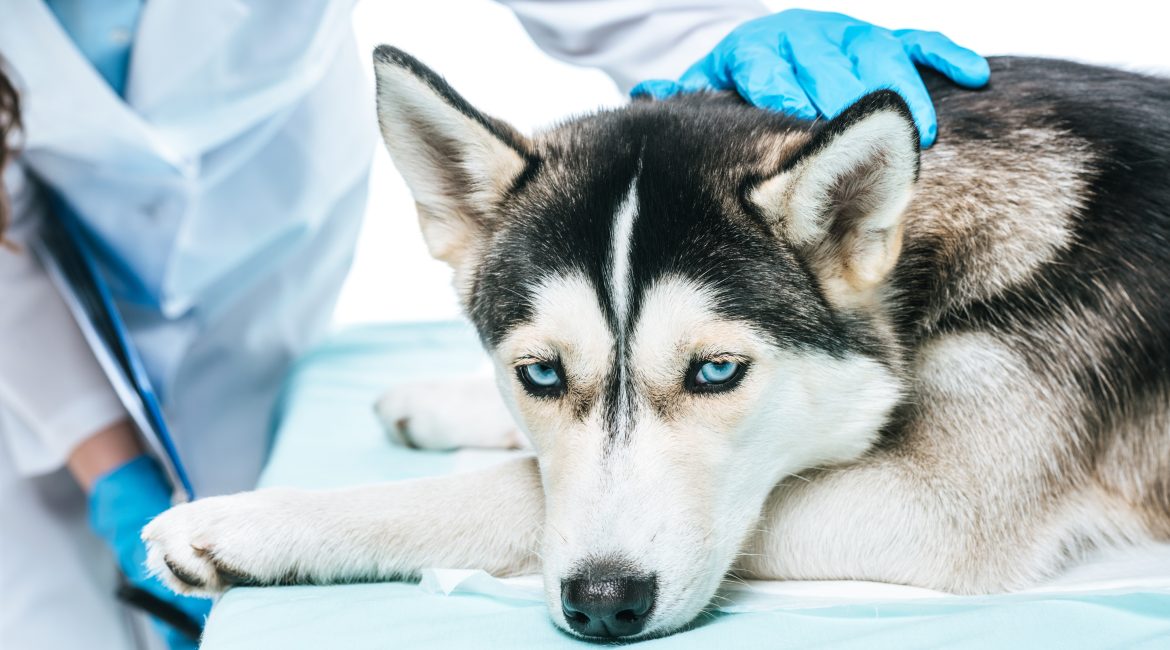Do you know when something’s up with your precious pup or kitty? Discover the top 5 tell-tale signs that you should take your pet to the vet and get to know the benefits of having a good animal health insurance provider at your side when you do.
Just like us, our animals show symptoms and signs that warn us that something is wrong. The problem is that your dog can’t complain. So, how do you know when to seek medical help?
Discover: Your Puppy’s First Vet Visit: Questions to Ask
When considering whether your pet needs a visit with the vet, there are some basic checks you can do to determine if your pet will need veterinary care in the near future, or possibly, even immediate emergency healthcare treatments for more severe issues.
Here are some crucial warning signs that every responsible pet owner should keep an eye on which will indicate that you should seek veterinary care for your precious pet.
5 signs you should take your pet to the vet
1. Change in behaviour
If your pet seems to be lethargic, sluggish, and more tired than usual, this could be a sign that something may be troubling your dog. If your pup is uninterested in activities they usually enjoy – such as playing outside or going for a walk – that could also be a sign of fatigue or sore muscles. You should take your furry family member to see a vet if any of these behaviours last for more than two days.
2. Abdominal distension or pain
Another serious warning sign of a medical emergency is if your pet appears to be in pain when you feel his/her abdomen. This is called a distended abdomen. Abdominal distension can sometimes indicate a gastric dilation-volvulus, which is a pretty serious condition that will require immediate healthcare intervention.
This condition could cause a complete obstruction in the stomach as the stomach twists over itself and results in your pet experiencing a lot of pain. If you see these signs, call your vet and arrange a consultation as soon as possible. Another possible cause of this pain could also include internal bleeding (ruptured spleen) or even fluid distension from the heart.
It’s best to get these symptoms checked out immediately so that any issues can be tackled in the early stages, and your pup or kitten will be as good as new in no time.
3. Change in eating habits
Your dog’s change in eating habits could be telling you something. The cause of the difference in your pet’s food consumption can be hard to identify, so it’s important to chat with an expert as soon as you see signs of this behaviour. Eating more or less food than normal is usually a sign of illness or infection.
For example, if your dog suddenly starts eating more and gaining weight, this might indicate that your fluffy best bud is experiencing the early stages of some metabolic disorders – such as Cushing’s Disease or Hypothyroidism. Changing eating habits can also be an indicator that your furry playmate is experiencing increased levels of stress, which often leads to decreased appetite.
ANYTIME a dog or cat stops eating altogether, it should be considered a medical emergency and it’s best to take your pet to the vet as soon as possible.
4. Vomiting
While your dog may vomit simply because they’ve eaten something that doesn’t sit well with them, or gobbled up too much food at once, vomiting might indicate some more severe, underlying issues. Vomiting and diarrhoea may be associated with your dog swallowing a toxic substance, or they may be suffering from a serious condition that requires medical attention.
Potential causes of vomiting and stomach sickness:
- Gastrointestinal and systemic disorders
- Bacterial infection of the gastrointestinal tract
- Intestinal parasites
- Acute kidney failure
- Pancreatitis
- Bloat
- Heatstroke
- Infected uterus
Now, this doesn’t mean there’s reason to panic. While these issues do sound threatening, they are all manageable with the right care. That’s why, if you see any warning signs of these issues, you should have a quick trip to the vet to make sure that everything is okay with your furry best friend.
Related: 10 Symptoms of Worms in Dogs
5. Leg paralysis or collapse
If your pet suddenly collapses, you should seek immediate medical attention. Even if your pup or kitten seems to be doing fine after the fall, a sudden collapse could indicate internal bleeding or anaphylactic shock due to consumption of a toxin.
Leg paralysis or collapse could also indicate an allergic response, as well as more severe issues such as an underlying heart condition, severe dehydration or hypoglycaemia.
Our recommendation
We understand that all these issues are very worrying for all pet parents, but it’s important to remember that early detection is the key to keeping your furry friend healthy and strong. If you notice any of these signs, call your vet and describe the details of these symptoms or behaviour changes.
If it’s necessary, you’ll be asked to bring your pet to the vet for a checkup or an immediate treatment, and you will be guided through the right healthcare process from there.
How can you afford vet care?
We know that your pets are an important part of your family. They are your best friends, your cuddle buddies and your favourite playmates. That’s why we strive to provide the best healthcare and maximum amount of comfort for your furry playmate with our range of affordable pet insurance plans.
From vet visit cover to handling the unexpected costs of illnesses or emergency healthcare treatments, Oneplan Pet Insurance has your back.
What does Oneplan offer?
With our Primary, Classic, and Super Plans, we offer vet visit cover. If any sneaky illnesses or infections do develop, you can take your pet to the vet for a checkup without having to worry about covering the costs or adjusting your budget to cover the expense. Our Hospital Plan provides illness cover up to R38 000 for any unexpected accidents or illnesses.
Our Excess Buster Add On allows you to waive the cost of any excess amount you’ll have to pay in every time you claim for seeing the vet. The claims process is simple, allowing you to preload funds to your Onecard BEFORE your vet visit in 1 minute, which you can then swipe at the vet like a regular debit card. With Oneplan, there is no set network of vets to choose from, meaning you get premium healthcare cover while being able to keep your family vet.
With the benefits of our pawsome pet insurance, you can sit back and relax knowing your pet is in good hands. Visit our website and get an instant quote to join the Oneplan family today.
Your Pet Insurance Family,
Oneplan




